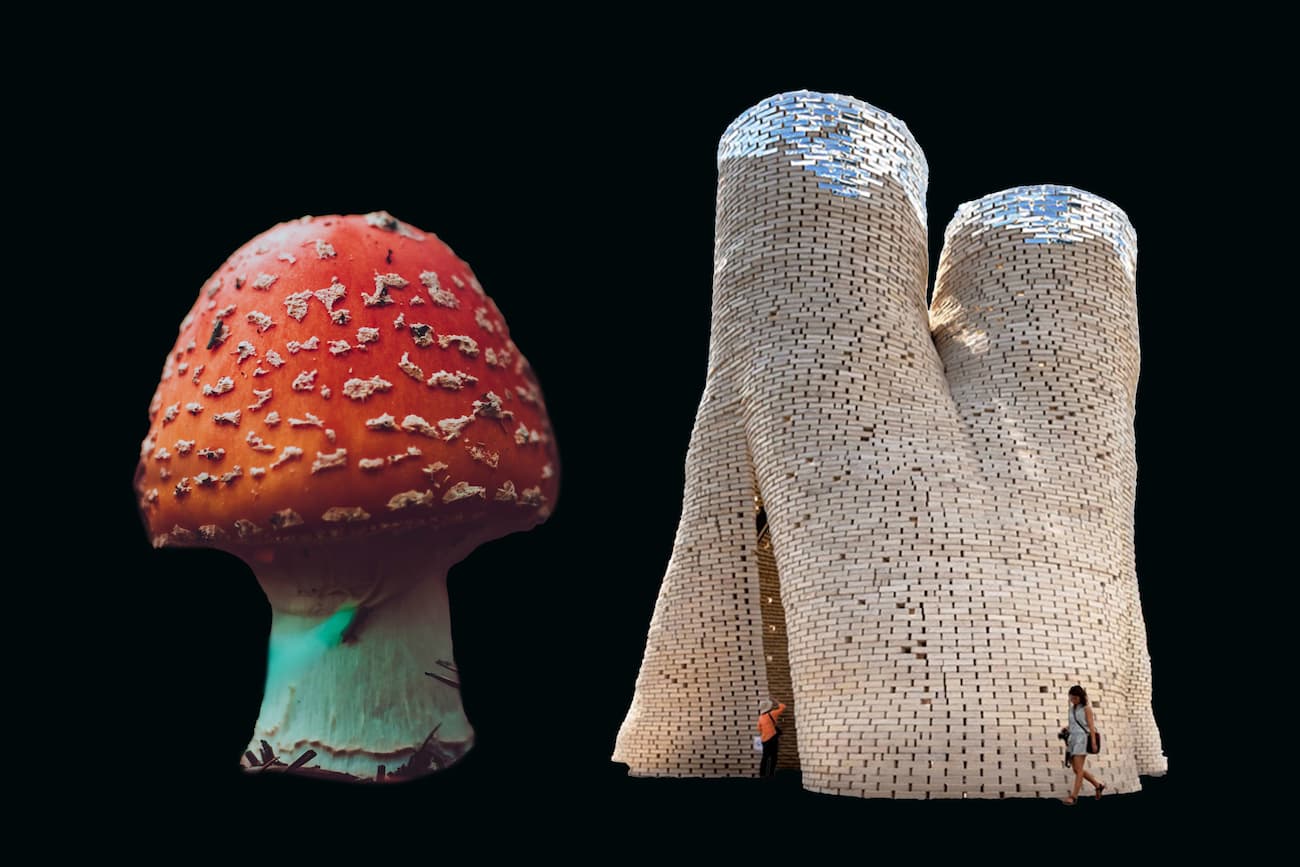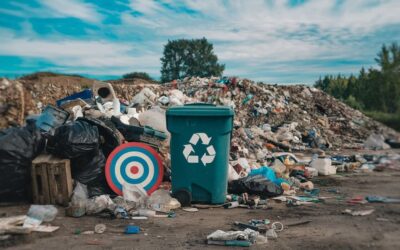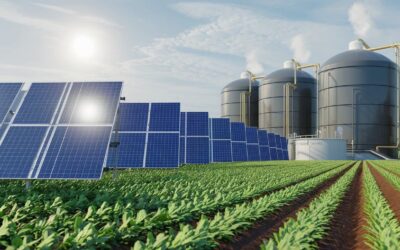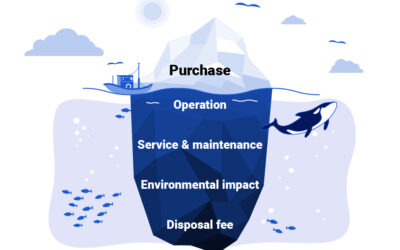In today’s race towards a greener and more sustainable future, eco-sustainable materials are emerging as the undisputed protagonists of a revolution that promises to transform industries and daily habits.
Among these, mycelium, derived from mushrooms, stands out as an extraordinary resource , forging a vital bridge towards the circular economy and energy transition.
This innovative biodegradable material not only offers an ecological solution to environmental problems, but also represents a tangible testimony of how nature can inspire the sustainable technologies of the future.
This article will explore the surprising properties of mycelium and its multiple environmental advantages, highlighting how this material can be used in various applications, from the creation of eco-friendly packaging to the development of low environmental impact consumer goods.
We will delve into the importance of mycelium in promoting more sustainable practices, highlighting its crucial role in the global ecological transition.
Through this article, we invite you to discover how sustainable materials, guided by the example of mycelium, are shaping a future where technology and nature coexist in harmony.
What is mycelium?
The mycelium is the vegetative part of a mushroom, made up of a set of filaments called hyphae.
These filaments grow and branch, forming a network that extends into the substrate, such as soil or wood, from which the fungus draws nourishment.
The mycelium is essential for the survival of the mushroom, as it absorbs the nutrients necessary for the growth and reproduction of the mushroom itself.
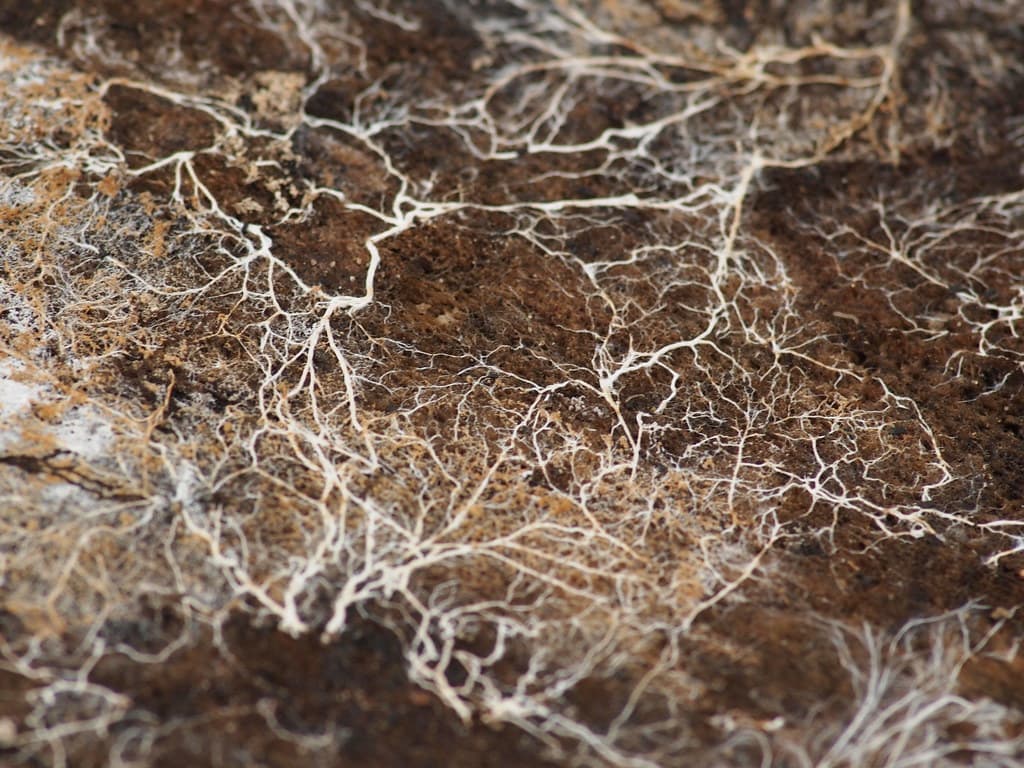
Structure and Growth
The hyphae of the mycelium extend and branch into the substrate, which can be soil, wood, or other organic material, at depths that can reach 50 cm underground or more deeply in the case of woody substrates.
This network of hyphae, under optimal conditions of temperature and humidity, grows rapidly, being able to extend at remarkable speeds of up to 6 mm per hour .
Reproduction and Development
The mycelium originates from a spore and can have different sexual characteristics. In some fungi, such as Boletus aereus , the fusion of mycelia of different sexualities can give rise to a fruiting body, known as a carpophore. This melting process is often stimulated by environmental changes such as changes in temperature or humidity.
Ecological functions
In addition to its importance in mushroom reproduction, mycelium plays a crucial role in the ecosystem. It decomposes organic matter in the soil, making it available for other organisms, and can extend over very large areas, as demonstrated by the discovery of a mycelium mushroom covering approximately 890 hectares in Oregon . This decomposition capacity supports soil fertility and biodiversity.
Adaptations and Interactions
Mycelium is highly adaptable and can react to specific carbon and nitrogen ratios in the substrate, modifying its growth in response to these conditions. In some cases, hyphae can even organize themselves into more complex structures such as rhizomorphs, which allow even faster growth and are often formed in response to low nitrogen availability.
In summary, mycelium is a complex and dynamic organism, essential for the life and reproduction of fungi, as well as a fundamental player in the ecological cycles of our planet.
Properties of the mycelium
Strength and durability
The mycelium stands out for its notable mechanical and fire resistance , capable of withstanding high loads and high temperatures. This feature makes it particularly suitable for applications in contexts that require long-lasting and safe materials. Its ability to self-repair, through the growth of new hyphae in the event of damage, further contributes to its longevity and resilience, making it an innovative and sustainable solution over time.
Biodegradability
One of the most significant properties of mycelium is its biodegradability. Being an organic material derived from the vegetative part of mushrooms, the mycelium decomposes naturally without leaving residues harmful to the environment. This feature distinguishes it from traditional building materials, offering a sustainable alternative that reduces environmental impact and promotes the use of renewable resources.

Thermal and acoustic insulation
The mycelium proves to be an excellent acoustic and thermal insulator , thanks to its low thermal and acoustic conductivity. These properties make it particularly suitable for the insulation of walls, floors and roofs, exceeding the performance of conventional materials such as fibreglass, mineral wool and extruded polystyrene. The durability and long-term performance of these natural insulators are comparable to those of their synthetic counterparts, with the added advantage of being sustainable even in the production phase, given that the mycelium growth process is characterized by negative carbon emissions.
Environmental benefits
Reduction of CO2 emissions
Mycelium and its derivatives play a significant role in reducing CO2 emissions. Through the biodegradation process, fungi transform the CO2 contained in wood industry waste into organic carbon, which can be used as food for plants rather than released into the atmosphere as a greenhouse gas. Furthermore, mycelium cultivation does not require the use of fossil fuels, which further contributes to decreasing the carbon footprint.
Use of organic waste
Mycelium offers an innovative approach to using organic waste. Mushroom growing media can include waste materials such as coffee grounds, straw and sawdust, turning them into useful biomaterials . This not only helps reduce the amount of waste going to landfill, but also promotes a circular economy, where nothing is wasted and everything is reused in sustainable ways.
Alternatives to synthetic materials
Mycelium composites represent a valid ecological alternative to traditional synthetic materials such as plastic and polystyrene. These biomaterials are completely biodegradable and possess insulating and resistance properties comparable to those of synthetic materials. Producing mycelium for materials like Mylo does not involve intensive livestock farming, further reducing the environmental impact associated with the production of conventional materials.
The future of mycelium in the ecological transition
State of the research
Environmental sustainability research is driving the adoption of more environmentally friendly practices across all sectors, including manufacturing, where mycelium is proving to be a promising material. This organism, being the vegetative apparatus of fungi, is characterized by its rapid growth and the possibility of being cultivated in controlled conditions , thus offering a renewable and sustainable resource for the production of materials.
Current research is exploring how to vary growth conditions and substrate types to obtain materials with different properties, ranging from leather alternatives to plastic substitutes. These developments indicate that mycelium could have a significant impact in several sectors, including construction and fashion, thanks to its versatility and eco-friendly properties.
Potential developments
The potential developments in the use of mycelium are vast and varied.
For example, using fibrous substrates such as grass clippings or agricultural by-products, it is possible to produce panels with good mechanical and insulation properties , which can be used not only in construction but also for decorative furnishings. In the fashion sector, mycelium offers a valid ecological alternative to leather, with the possibility of creating materials suitable for the production of clothes, bags and accessories. At the same time, the growing attention from major brands demonstrates the commercial viability of this innovative technology.
Replacing part of meat consumption with mushroom-based products could significantly reduce the environmental impact of human nutrition, contributing to the reduction of deforestation and greenhouse gas emissions. The textile sector is also exploring the use of fungi for the production of sustainable materials, demonstrating the potential of fungi in a variety of applications. This vision of using fungi to create eco-friendly building materials and degrade pollutants reflects a more organic approach to circularity, paving the way for a future where buildings could be grown rather than built. With mushrooms offering sustainable solutions for construction, transportation and even packaging, mushroom biotechnology emerges as a key ally for decarbonization and the transition to a circular economy.
Mycelium-based packaging and consumer goods
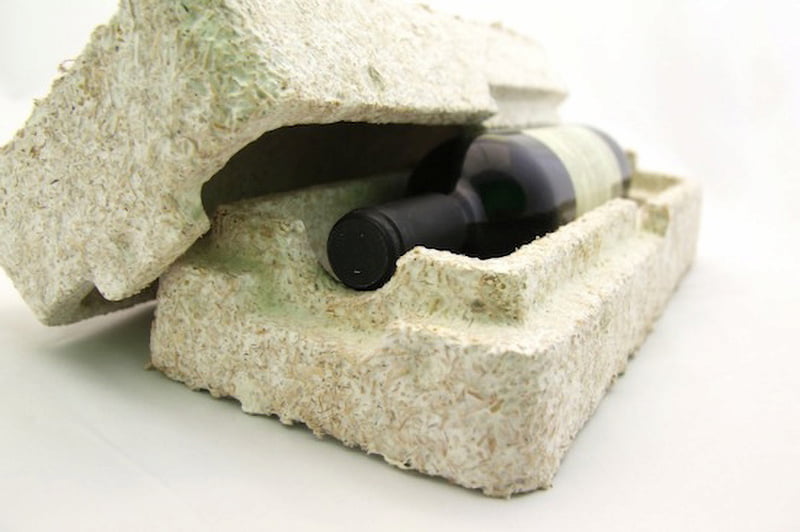
Replacement of plastic and cardboard
Mycelium, combined with agricultural waste, is emerging as a sustainable alternative to traditional plastic and cardboard packaging. Innovative packaging materials made from hemp fiber and mycelium can replace expanded foams, cardboard and plastic packaging, being home compostable and growing directly in the mold which takes the desired shape for the final application. This solution not only reduces the dependence on materials derived from fossil fuels but also supports the concept of circular economy through the use of organic waste.
Companies are adopting this technology to create packaging for hi-tech products, wines, fine oils and even for construction applications, such as biobricks or insulation panels. These materials are flexible, highly resistant, fireproof and ideal for different applications, demonstrating their effectiveness and usability comparable to that of polystyrene.
Innovations from leading companies
Companies like Ecovative and Magical Mushroom Company are driving innovation in sustainable packaging. Ecovative uses mycelium to produce wine crates and computer packaging pads, while Magical Mushroom Company has raised significant funding to expand production of these sustainable materials. These companies demonstrate how mycelium can be used not only to reduce the environmental impact of packaging but also to create value from agricultural waste.
Furthermore, the Italian startup Smush has developed a mycelium-based material that is fireproof, compostable, lightweight, sound-absorbing and hydrophobic, suitable for making completely natural and biodegradable packaging. This material represents an eco-friendly and viable solution that can replace polystyrene in packaging, significantly contributing to reducing your carbon footprint.
These innovations represent crucial steps towards a more sustainable future, where biodegradable and renewable resource-based materials replace polluting and unsustainable ones, promoting a more environmentally friendly approach to industrial production and consumption.
Conclusion
Through exploring the unique properties of mycelium and its multifunctional uses, this article has highlighted how this biodegradable material represents a valuable resource for promoting a more sustainable future . Highlighting its key role in the fields of construction, packaging and even sustainable fashion, it clearly emerges that mycelium is not only an ecological alternative to traditional materials, but a tangible testimony of human ingenuity in seeking harmonious solutions with the environment that surrounds us.
In the current context, characterized by a growing awareness of the importance of environmental sustainability, mycelium embodies significant promise for the transition towards more ecosystem-friendly practices . Encouraging further research and wider adoption of sustainable technologies such as mycelium-based ones can accelerate our march towards a zero-emission, circular economy. The story of mycelium, therefore, stands not only as an intriguing chapter in the evolution of sustainable materials, but also as a call to action for innovators and consumers, inviting us all to actively contribute to safeguarding our planet for future generations.
FAQs
What types of materials are considered sustainable?
Materials deemed sustainable include those that can be recycled or are already recycled, compostable, biodegradable, durable and reusable. Among these, some of the most common in sustainable design are linoleum, cork, bamboo, glass, plastic, wood, paper and jute.
What materials are chosen to create sustainable packaging?
When creating sustainable packaging, preference is given to eco-friendly and biodegradable materials that promote environmentally friendly shipping. Among these solutions, FSC certified paper is often chosen.
What is the function of the mycelium?
The mycelium represents the vegetative component of the fungus, responsible for carrying out asexual reproduction. In addition to this, mycelium plays a crucial role in microfiltration, absorbing nutrients and acting as an organic filter for soil and water in the surrounding environment.
How do you proceed with growing mushrooms using mycelium?
To grow mushrooms through the mycelium, the process is simple: simply drill a few holes and insert the Mara Mushroom Mycelium Nails with the help of a hammer, then wait. By placing inoculated logs in an undergrowth-like environment and following basic growing instructions, you will see mushrooms emerge in the fall and spring, following the natural cycle.

